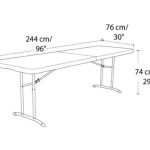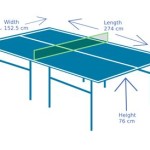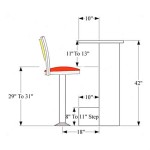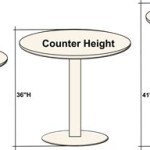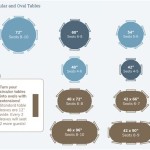Sanding An Oak Table: A Comprehensive Guide
Oak tables, prized for their durability and natural beauty, often become focal points in homes. Over time, however, these tables can accumulate scratches, dents, and worn finishes. Sanding provides a crucial step in restoring an oak table to its original splendor or preparing it for a new finish. This process, when executed correctly, removes imperfections and creates a smooth, even surface ready to receive stain, paint, or varnish. Understanding the proper techniques and tools is paramount to achieving a professional-looking result.
Identifying the Existing Finish and Assessing the Table's Condition
Before commencing any sanding, identifying the existing finish is essential. This knowledge will influence the selection of appropriate sanding techniques and materials. Common finishes on oak tables include varnish, lacquer, polyurethane, and shellac. A simple test can help determine the finish type. Apply a small amount of denatured alcohol to an inconspicuous area of the table. If the finish softens or dissolves, it is likely shellac. Lacquer thinner will affect lacquer finishes similarly. Polyurethane and varnish are more resistant to these solvents.
Once the finish is identified, a thorough assessment of the table's condition is necessary. Look for deep scratches, dents, stains, and areas where the finish is peeling or flaking. Note any veneer damage, as sanding veneer requires extra caution. The severity of the damage will dictate the grit of the sandpaper to begin with. Light scratches and imperfections may only require a light sanding with fine-grit sandpaper, while more significant damage will necessitate starting with coarser grits.
Consider the table's construction. Is it solid oak, or does it have a veneer layer? Veneer is a thin layer of wood adhered to a less expensive substrate. Sanding veneer requires a delicate touch to avoid sanding through the veneer and exposing the underlying material. If the table has intricate carvings or details, these areas will require hand sanding and careful attention to prevent damage.
Proper preparation also includes cleaning the table. Use a mild detergent and water to remove any dirt, grease, or wax. Rinse thoroughly and allow the table to dry completely before sanding. This ensures that the sandpaper does not become clogged with debris and that the sanding process is effective.
Selecting the Right Sandpaper and Tools
Choosing the appropriate sandpaper is crucial for achieving a smooth, even finish. Sandpaper is graded by grit, with lower numbers indicating coarser grits and higher numbers indicating finer grits. A typical sanding progression for refinishing an oak table involves starting with a coarse grit (e.g., 80-grit), moving to a medium grit (e.g., 120-grit), and finishing with a fine grit (e.g., 220-grit or higher).
For removing old finishes or addressing significant imperfections, an 80-grit sandpaper is often used. This coarse grit aggressively removes material, but it can also leave noticeable scratches. Therefore, it is important to follow up with progressively finer grits to eliminate these scratches. A 120-grit sandpaper is suitable for smoothing out the scratches left by the 80-grit and preparing the surface for finer sanding. A 220-grit sandpaper is ideal for the final sanding stage, creating a smooth, uniform surface ready for finishing.
For sanding veneer, it is generally recommended to start with a finer grit, such as 120-grit, and proceed cautiously. Avoid excessive pressure and frequent checks to prevent sanding through the veneer. Hand sanding is often preferred for veneer and intricate details.
In addition to sandpaper, several tools are necessary for sanding an oak table effectively. A random orbital sander is a valuable tool for sanding large, flat surfaces. It uses a circular and oscillating motion to remove material quickly and evenly. A sanding block is useful for hand sanding edges, corners, and curved surfaces. Detail sanders, with their pointed or triangular pads, are helpful for reaching tight spaces and intricate carvings.
Dust collection is also an important consideration. Sanding generates a significant amount of dust, which can be harmful to breathe and can also contaminate the work area. A dust mask or respirator is essential for protecting the lungs. Connecting the sander to a vacuum cleaner with a dust collection hose can significantly reduce airborne dust. Additionally, working in a well-ventilated area is recommended.
The Sanding Process: Techniques and Best Practices
The sanding process should be approached systematically, starting with the coarsest grit sandpaper and progressing to finer grits. When using a random orbital sander, apply light, even pressure and move the sander in overlapping passes across the surface. Avoid pressing down too hard, as this can create uneven sanding and damage the wood.
When sanding with each grit, ensure that all scratches from the previous grit are removed before moving on to the next. This may require multiple passes with each grit. Periodically clean the sandpaper to remove accumulated dust. A clogged sandpaper is less effective and can leave scratches.
Edges and corners require special attention. Avoid rounding over sharp edges by sanding lightly and evenly. Use a sanding block to maintain the shape and prevent accidental damage. For curved surfaces, use a flexible sanding pad or sponge to conform to the contours.
Hand sanding is often necessary for areas that are difficult to reach with a power sander, such as intricate carvings and details. Wrap sandpaper around a sanding block or use a detail sander to carefully sand these areas. Pay close attention to the grain of the wood and sand in the direction of the grain to avoid scratching.
After sanding with each grit, thoroughly remove all dust from the surface. Use a vacuum cleaner with a brush attachment to remove loose dust, and then wipe the surface with a tack cloth to pick up any remaining fine particles. A tack cloth is a sticky cloth that effectively removes dust without leaving residue.
Between sanding grits, inspect the surface for any imperfections that may have been missed. Use a pencil to mark any remaining scratches or dents so that they can be addressed during the next sanding stage. This attention to detail will ensure a flawless finish.
Following the final sanding with a fine-grit sandpaper, the surface should be exceptionally smooth and ready for finishing. Before applying any finish, perform a final dust removal. Ensure that the work area is clean and free of dust to prevent contamination of the finish. Apply the chosen finish according to the manufacturer's instructions.
For optimal results, consider applying a wood conditioner before staining. Wood conditioner helps to even out the absorption of stain, preventing blotchiness and ensuring a uniform color. Allow the wood conditioner to dry completely before applying the stain.
After staining, apply several coats of a protective finish, such as varnish, lacquer, or polyurethane. Sand lightly between coats with a very fine-grit sandpaper (e.g., 320-grit or higher) to remove any imperfections and ensure proper adhesion of the subsequent coat. Follow the manufacturer's instructions for drying times and application techniques.
By following these guidelines and taking the proper precautions, any individual can achieve a professional-looking finish on an oak table. The investment of time and effort will be rewarded with a beautifully restored piece of furniture that will be enjoyed for years to come. Remember to practice patience and attention to detail throughout the sanding and finishing process.

Furniture Restoration Rescuing A Damaged Oak Table With Beeswax Polish Cambridge Traditional S

Sanding Solid Oak Table Seeking Matte Finish Which Will Not Darken

How To Refinish A Table Sand And Sisal

Sanding Down An Old Oak Table Ferg S Gaff

How To Ceruse An Oak Dining Table Addicted 2 Decorating

How To Refinish A Dining Table Without Stripping The Original Coat

My Rookie Sanding Mistake Rawhyde Furnishings

Refinished Natural Oak Dining Table Entri Ways

How To Refinish A Worn Out Dining Table

Rustic Farmhouse Table Makeover With Danish Oil




